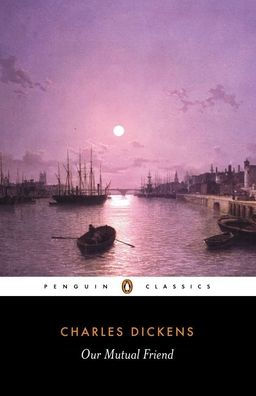Charles Dickens's last complete novel and a glorious satire spanning all levels of Victorian society Our Mutual Friend centres on an inheritance - Old Harmon's profitable dust heaps - and its legatees, young John Harmon, presumed drowned when a body is pulled out of the River Thames, and kindly dustman Mr Boffin, to whom the fortune defaults. With brilliant satire, Dickens portrays a dark, macabre London, inhabited by such disparate characters as Gaffer Hexam, scavenging the river for corpses; enchanting, mercenary Bella Wilfer; the social-climbing Veneerings; and the unscrupulous street-trader Silas Wegg. The novel is richly symbolic in its vision of death and renewal in a city dominated by the fetid Thames, and the corrupting power of money. Our Mutual Friend uses text of the first volume edition of 1865 and includes original illustrations, a chronology and revised further reading. As Adrian Poole writes in his introduction to this new edition, 'In its vast scope and perilous ambitions it has much in common with Bleak House and Little Dorrit, but its manner is more stealthy, on edge, enigmatic.' For more than seventy years, Penguin has been the leading publisher of classic literature in the English-speaking world. With more than 1,700 titles, Penguin Classics represents a global bookshelf of the best works throughout history and across genres and disciplines. Readers trust the series to provide authoritative texts enhanced by introductions and notes by distinguished scholars and contemporary authors, as well as up-to-date translations by award-winning translators.
1100166247
Our Mutual Friend
Charles Dickens's last complete novel and a glorious satire spanning all levels of Victorian society Our Mutual Friend centres on an inheritance - Old Harmon's profitable dust heaps - and its legatees, young John Harmon, presumed drowned when a body is pulled out of the River Thames, and kindly dustman Mr Boffin, to whom the fortune defaults. With brilliant satire, Dickens portrays a dark, macabre London, inhabited by such disparate characters as Gaffer Hexam, scavenging the river for corpses; enchanting, mercenary Bella Wilfer; the social-climbing Veneerings; and the unscrupulous street-trader Silas Wegg. The novel is richly symbolic in its vision of death and renewal in a city dominated by the fetid Thames, and the corrupting power of money. Our Mutual Friend uses text of the first volume edition of 1865 and includes original illustrations, a chronology and revised further reading. As Adrian Poole writes in his introduction to this new edition, 'In its vast scope and perilous ambitions it has much in common with Bleak House and Little Dorrit, but its manner is more stealthy, on edge, enigmatic.' For more than seventy years, Penguin has been the leading publisher of classic literature in the English-speaking world. With more than 1,700 titles, Penguin Classics represents a global bookshelf of the best works throughout history and across genres and disciplines. Readers trust the series to provide authoritative texts enhanced by introductions and notes by distinguished scholars and contemporary authors, as well as up-to-date translations by award-winning translators.
13.0
In Stock
5
1

Our Mutual Friend
928
Our Mutual Friend
928Paperback(Revised ed.)
$13.00
13.0
In Stock

Product Details
| ISBN-13: | 9780140434972 |
|---|---|
| Publisher: | Penguin Publishing Group |
| Publication date: | 02/01/1998 |
| Series: | World's Classics Series |
| Edition description: | Revised ed. |
| Pages: | 928 |
| Sales rank: | 56,455 |
| Product dimensions: | 5.10(w) x 7.80(h) x 2.00(d) |
| Age Range: | 18 Years |
About the Author
What People are Saying About This
From the B&N Reads Blog
